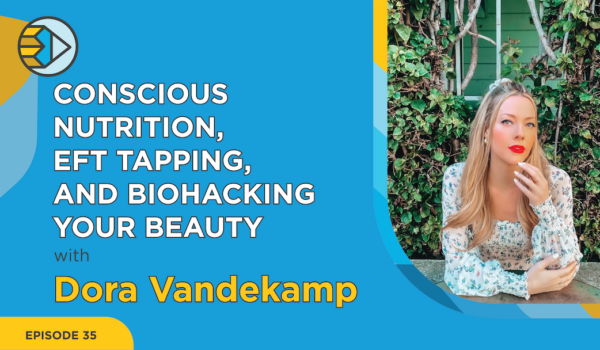
EP 30: English Grammar 101: The 8 Primary Parts of Speech
This week we continue our weekly mini series. We are investigating the foundations of English grammar, starting with the basics and moving on from there. This week we discuss the 8 primary parts of speech and how they can improve your capacity to communicate. Join Cath Anne as she reviews the foundations of English grammar.
Looking for study tips, help with essay writing, or advice on how to be a better student? Welcome to The Homework Help Show, a weekly show where we teach, assist, and offer valuable insights for student life. From study hacks to writing tips, discussions about student mental health to step-by-step guides on academic writing and how to write a resume, we’ve got you covered. Want your questions answered? Write them below or join the conversation on social media using the hashtag #askHHG
TRANSCRIPT:
Cath Anne: [00:00:05] Hey guys. I’m Cath Anne and welcome to the Homework Help Show. I can’t believe that is already Episode 30 of the show. In this show, for those of you who don’t know, we provide you with content for your academic and student life.
Cath Anne: [00:00:26] Just a quick reminder before we do jump into the content, every Monday at 7pm Eastern Standard Time you can join me live on Instagram and we will just have a quick chat and I’ll remind you to check out some of our videos. Love to see you guys there.
Cath Anne: [00:00:48] This week we are returning to our Grammar 101 series and we are going to talk about the parts of speech. All words in the language classified as one of the parts of speech. Understanding these different parts of speech can allow you to communicate more fluently, it can allow you to write more quality essays, it can help you to punctuate sentences properly. These are all the foundations of learning to speak and write in English. These tips can be helpful for anyone even if you are a native English speaker. It always helps to get back to the foundations of the language and to re-learn a few of these skills. So, if you’re interested, continue watching.
Cath Anne: [00:01:28] The 8 parts of speech are nouns, pronouns, verbs, adjectives, adverbs, prepositions and conjunctions. Last week we discussed nouns and pronouns and this week we are going to give you a brief overview of the other parts of speech. You can feel free to pause the video at any time to stop and take notes, read what I’ve put on the board, if that’s of benefit to you.
Cath Anne: [00:02:04] Let’s start with the verb. A verb is a word that describes an action or a state of being. Now, the second part of the definition here is really important as many believe that verbs are only words that indicate an action or that can be visualized. This is true of words like, walk, run, jump, play, sing, laugh, dance.
Cath Anne: [00:02:40] Those are all words that indicate actions. Our options. However, there are also linking verbs and these are words that indicate a state of being, classification or existence. The following are the most common linking-verbs: is, am, were, was. And then we also have verb phrases ending in be, been and being. So, keep in mind that these are all verbs as well even though they don’t indicate blatant action.
Cath Anne: [00:03:15] Another thing to remember is that verbs often change their ending to indicate a temporal relationship or a relationship to time. This is referred to as verb tense. For example, ‘walk’ is the present tense of the verb ‘to walk’ and ‘walked with an ‘ed’ added to it indicates the past tense of the verb ‘walk’.
Cath Anne: [00:03:43] So, as you see there, we change the verb tense depending on its relationship to time.
Cath Anne: [00:03:53] Moving on to the adjectives. An adjective modifies, limits, or describes a noun or a pronoun. Essentially it provides more information about the person, place or thing it is describing. For example, in the sentence, “Frank is a tall, skinny man” can you guess which are the adjectives? ‘Tall’ and ‘skinny’ are both adjectives because they describe the, noun or the subject, who is Frank.
Cath Anne: [00:04:30] Then we have adverbs. They are certainly similar to adjectives, but they act in the same way towards verbs. So, they modify a verb. You might recognize adverbs because they generally tend to end in ‘ly’.
Cath Anne: [00:04:48] So, for example, in a sentence, “Susan walked slowly towards the door”, the adverb would be the word slowly, because it describes how Susan walked.
Cath Anne: [00:05:11] A preposition shows the relationship between a noun and a verb. this one is also in relation to time, or space, or direction.
Cath Anne: [00:05:22] Now, I’ll explain this a little bit more. So, for instance, let’s take the sentence, “Mark walked toward the door.” The word toward is a preposition because it indicates that Mark is walking in a certain direction. When linked with nouns and pronouns, prepositions create phrases that are called prepositional phrases. So, for example, in the sentence I just gave you, ‘toward the door’ is considered a prepositional phrase because it ends with the word ‘toward’.
Cath Anne: [00:06:03] Finally, we have conjunctions. These ones are really quite fun. Conjunctions are used to link words and parts of sentences together. They can also be considered joining words. There are four different types of conjunctions. We have coordinating conjunctions, we have subordinating conjunctions, we have conjunctive adverbs, and we have correlative conjunctions. Don’t worry, I’ll walk you through.
Cath Anne: [00:06:31] Such. Don’t worry a lot. So, coordinating conjunctions are words like: for, and, Nor, but, or, yet, so.
Cath Anne: [00:06:47] They are used to connect similar words or independent clauses, in other words, sentences together. Coordinating conjunctions are often referred to as FANBOYS. That can help you to remember all the words that are in coordinating conjunctions.
Cath Anne: [00:07:14] Subordinating conjunctions come at the beginning of a subordinate clause. They are used to connect the subordinate clause to the rest of the sentence. They can also be referred to as the independent clause. Common subordinating conjunctions are: after, although, because, before, even though, if, once, rather than, since that, though, unless, until, whenever, whereas, and while. That was a lot of words. For example, “I went to the cafeteria before I went to class.”
Cath Anne: [00:07:58] The word before connects the subordinate clause, ‘I went to class’ with the independent clause, ‘I went to the cafeteria’. So, the word before was a conjunction because it joins those two clauses.
Cath Anne: [00:08:19] We then have conjunctive adverbs, and these are going to be really important for you guys, so, make sure you pay attention here. These are transitional words used to connect one sentence to another.
Cath Anne: [00:08:20] Common conjunctive adverbs include: additionally, in addition, moreover, also, however, for example, in conclusion. You probably recognize ones a little bit. This is because conjunctive adverbs can be really helpful when you are writing an essay. There many times that you will want your essay to flow so you will use a conjunctive adverb to join one sentence with another and continue your thought process. Definitely, take note of those and use them in your writing.
Cath Anne: [00:09:14] Then, last but not least, we have correlative conjunctions. They are a combination of coordinating conjunctions with another word. For example, in the sentence, “Both John and I are having a hard time at homework”, ‘both’ and ‘and’ would be considered correlative conjunctions because as you can see they join the sentence together. They join John and I together and they make the sentence flow properly.
Cath Anne: [00:09:53] Okay, so, I hope that was of benefit to you. If you do have any questions, please leave them in the comments below.
Cath Anne: [00:10:01] Next week, we will be getting into the nitty gritty and more substantial content around grammar. We will be talking about how to use one word versus another word. We will be talking about a variety of words and how to use them in different cases in the English language. Sometimes they can be confusing. So, we will talk about that and we will talk about some of the common errors that are made as well.
Cath Anne: [00:10:30] If you did like this video and you want to see more of our content, check us out on Facebook, Instagram, LinkedIn, Medium, Spotify SoundCloud, Anchor, iTunes Apple Podcast, Google Play Music and of course right here on YouTube. If you did like this video and you want to see more of us give us a thumbs up. It would really help us and also subscribe to our channel to keep in the loop. That’s it for me this week guys. I hope to talk to you soon. I hope this was of benefit. Take care.
Share:

